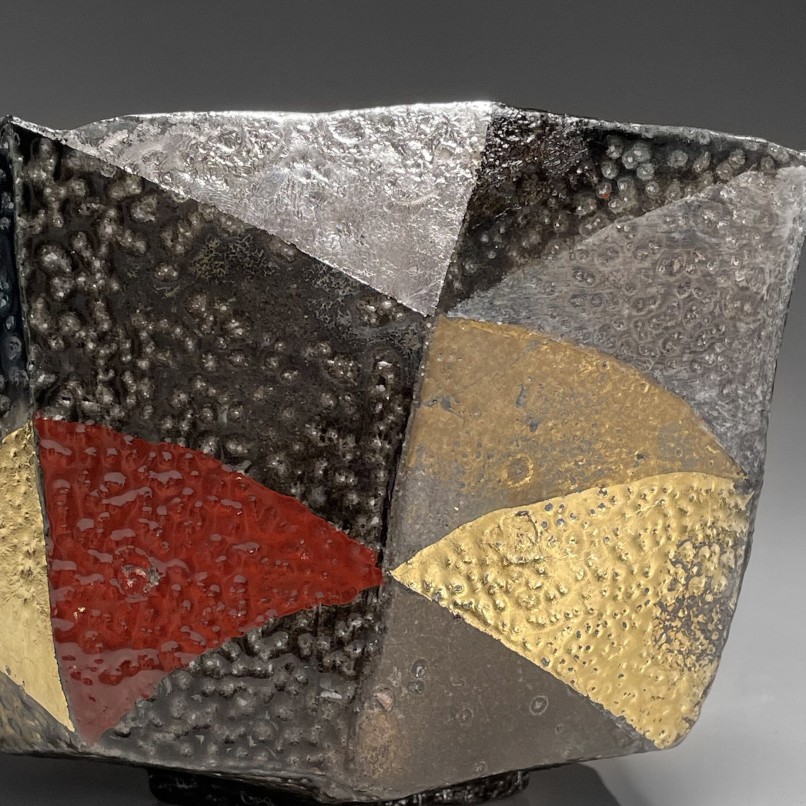
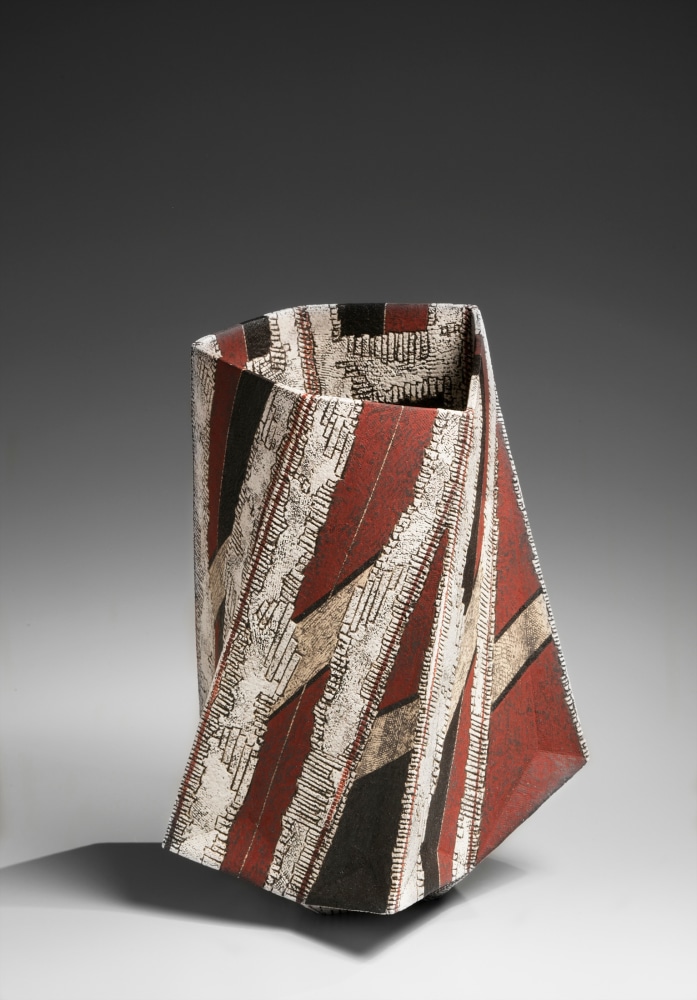
KAZARI: BEYOND DECORATION
JOAN B MIRVISS LTD AT THE WINTER SHOW 2022... in spring!
660 Madison Avenue (former Barney's)
April 1-10, 2022 | Booth 1-16 on main floor
To adorn or decorate tastefully can transform the ordinary into the extraordinary. The Japanese term kazari refers to such ornamentation that ranges from funky, to cool, to surprising, to utterly splendid. But going further, it describes the sensation when, gazing upon such intentional decoration, one is pulled out of the mundane into the transcendent. Our spring exhibition presents this concept of traditional Japanese aesthetics realized in a multitude of patterns, surface treatments, designs and colors in prints, paintings, and ceramics to showcase the Japanese emphasis on the deeper meaning and appreciation of what is often regarded as "mere" decoration. KAZARI: Beyond Decoration will be presented at The Winter Show 2022, now taking place in spring, and at an exciting new venue at 660 Madison Avenue (60/61 Sts).
Unlike the West, where decorative arts are still categorized as subordinate to fine arts, the Japanese concept of aesthetics made no such hierarchical distinction for centuries.
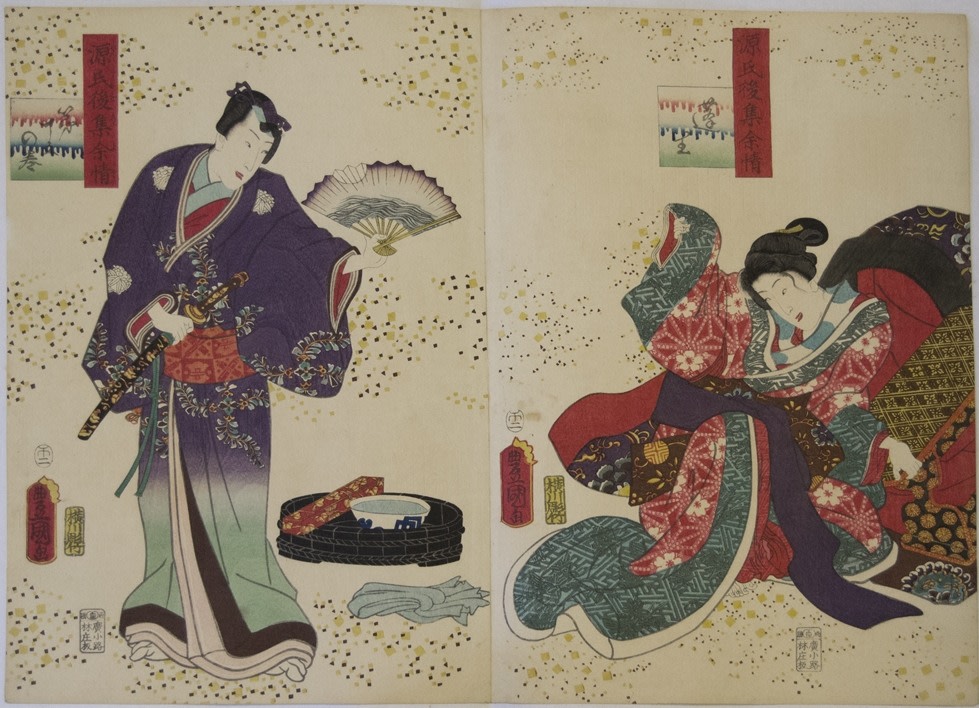
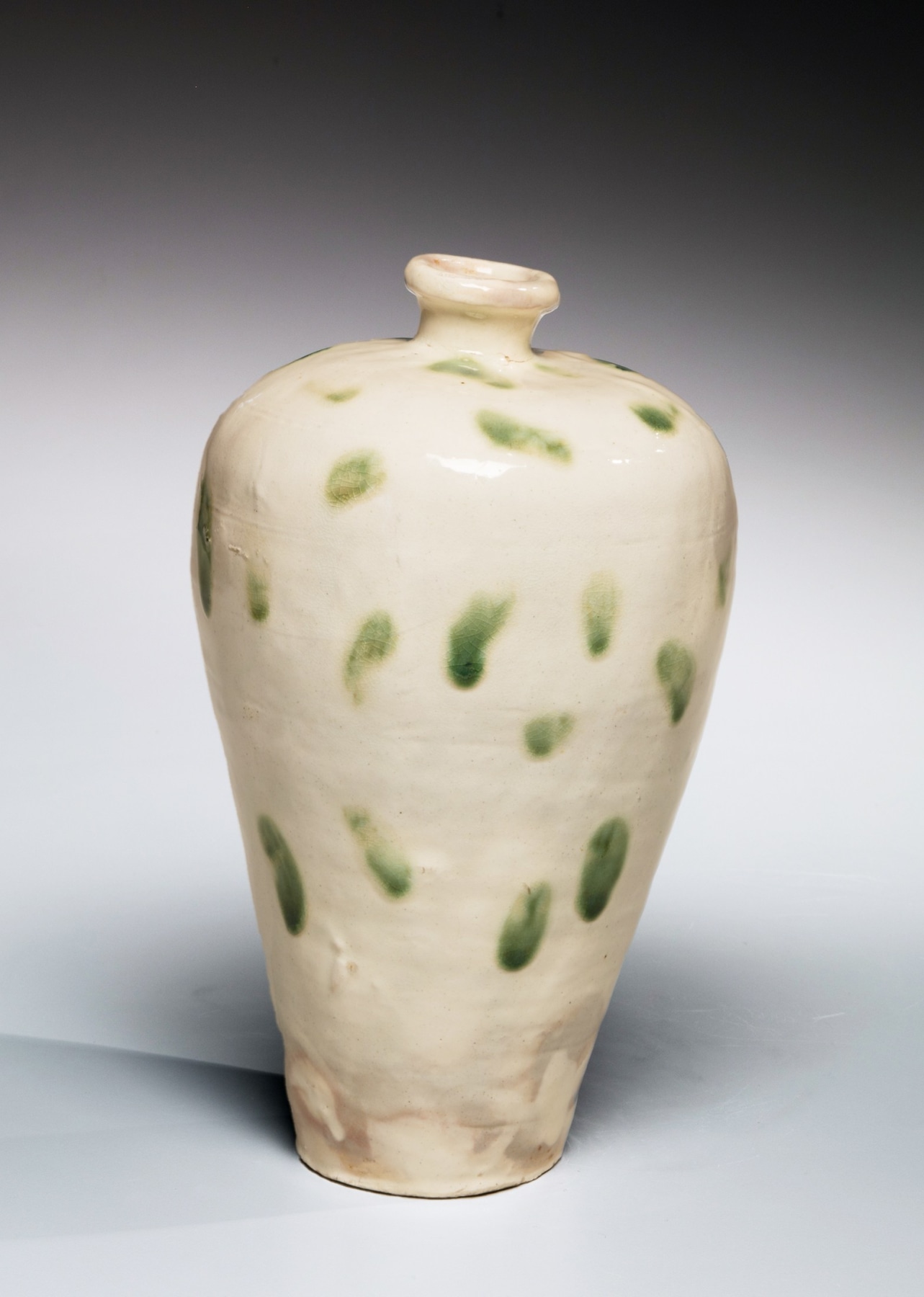
Kazari has long been in the Japanese lexicon and as a result, has accumulated many layers of rich meaning. Over a thousand years ago, it referred to decoration that epitomized elegance and sophistication among the elites. In the more modern Edo period, kazari suggested sensual delights that extended its influence to textiles, ukiyo-e, and even everyday objects. For our exhibition, kazari applies to a charmingly diverse set of artworks that encompass its many connotations.
In one sense, kazari can be characterized by the elements of delight and surprise.
Delight can come from dazzling surface patterns, as seen on the distinctive works of iroe master Maeda Masahiro (b. 1948), or from unexpected asymmetry, found everywhere from Takiguchi Kazuo's (b. 1953) torn-mouth vessels to the enhanced perspective of Utagawa Hiroshige's iconic woodblock prints. And with kazari, there is always a playfulness, exemplified by Kitaōji Rosanjin (1883-1959) covering his vase in daubs of green glaze impishly applied with his fingers.
Kazari encompasses ceremonial interiors to handheld bowls, and such decoration delighted the deities and the people alike.
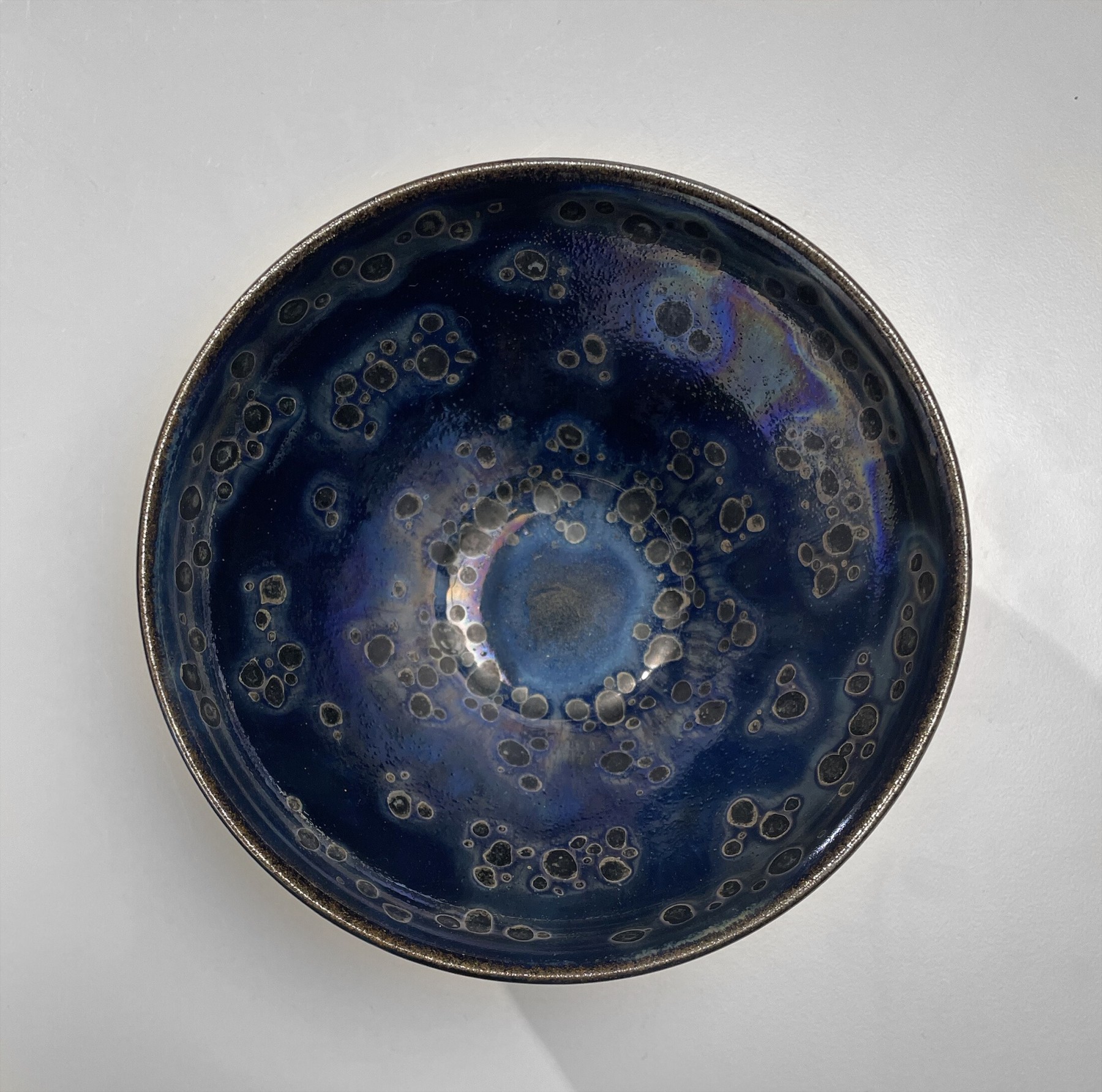
Kazari is further activated by the use and placement of such highly ornate objects – their context elevates them to a level beyond decoration. In the past, ceremonial and festival objects were intended to delight the deities; nowadays, the everyday rituals of drinking tea, for example, offers deeper meaning to the intergalactic tenmoku-glazed teabowls of Seto Takemi (b. 1958) or the jewel-like teabowls of celadon master Kawase Shinobu (b. 1950).
Both movement of and within the object or artwork conveys kazari, such as a rustling kimono sleeve depicted in the woodblock prints of Utagawa Kunisada and Keisai Eisen, or the fluttering sun umbrella held by a young beauty seen from behind, in a painting by Ikeda Shoen (1886-1917), who is just about to turn over her shoulder.
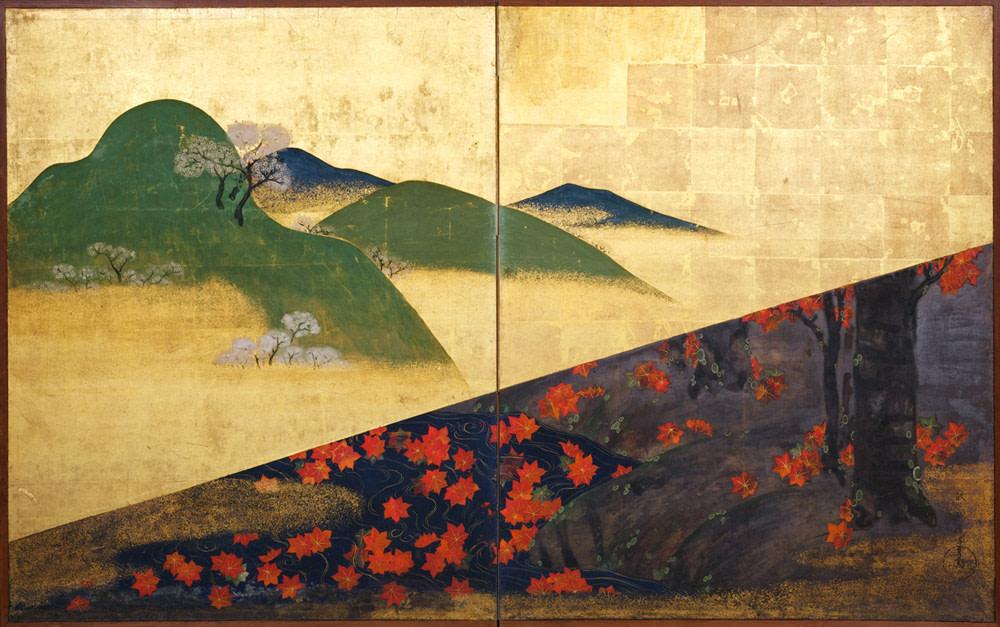
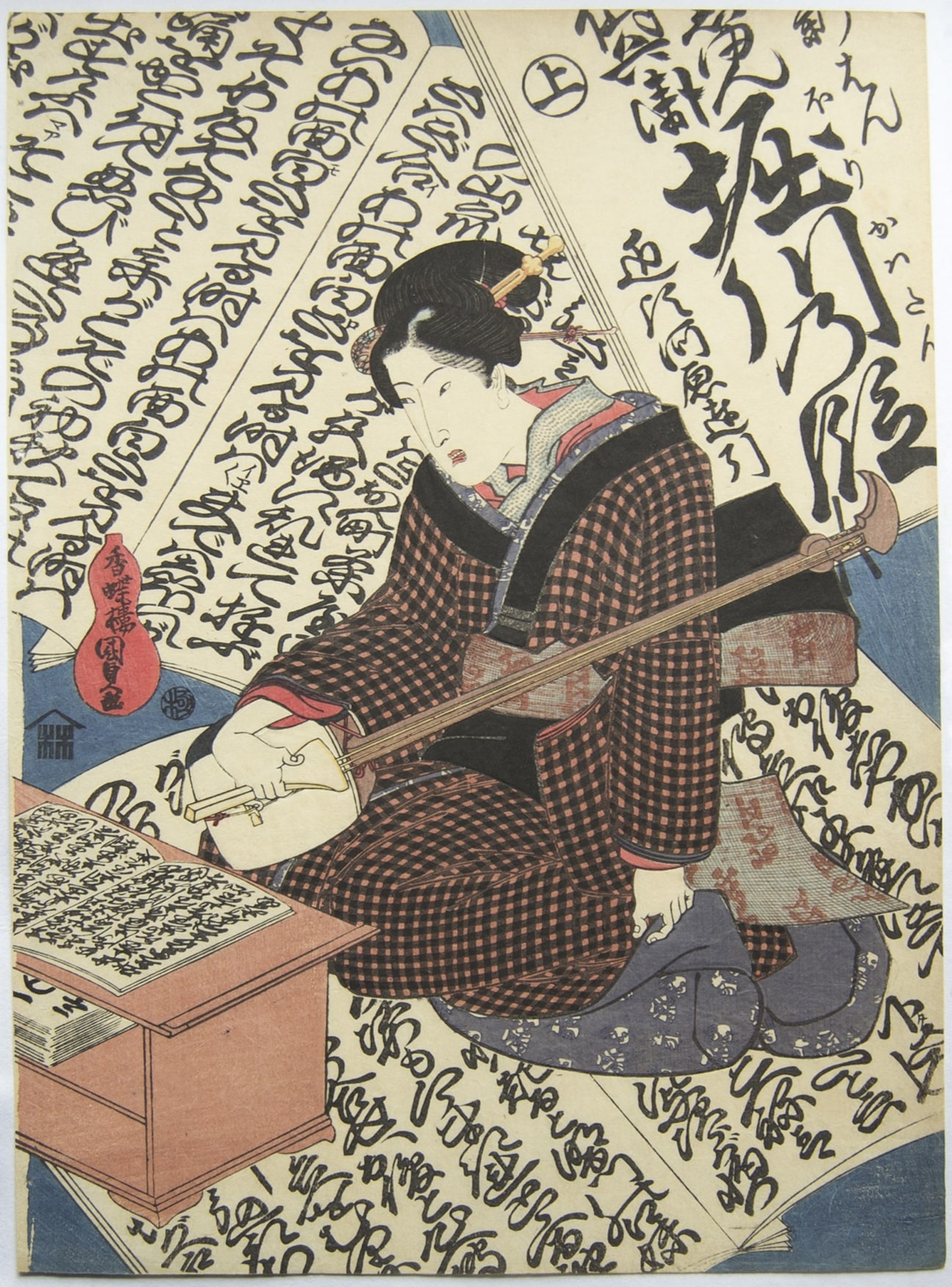
Most fittingly, this exhibition will be presented in the ultimate forum for enchanting, delicious display – in what was formerly Barney's New York department store. Through captivating colors, patterns, and forms, kazari can also signify pure presentation. Matsuda Yuriko's (b. 1943) boldly patterned, spiked seashell begs to be shown off. The large porcelain lidded box with kutani enamel glazes by Takegoshi Jun (b. 1948), with patterning wrapping around and inside, can command attention on any shelf. And the dramatically composed, lavishly gilded two-fold screen by Nakano Kimei (1834-92) not only reimagines classical themes of rinpa painting in a modern way but also undeniably changes the landscape of any room it is in.
Unlike the West, where 'decorative arts' are still categorized as subordinate to 'fine arts', the Japanese concept of aesthetics made no such hierarchical distinction for centuries. Kazari encompasses daily objects to festival objects, from ceremonial interiors to handheld bowls, and such decoration delighted the deities and the people alike. From April 1 to 10, Joan B Mirviss LTD will present KAZARI: Beyond Decoration at The Winter Show 2022's latest venue, 660 Madison Avenue. Our booth will be located on the main floor with a street-facing window. Please stay in touch with us as more details about the event are forthcoming: 212-799-4021 or director@mirviss.com.
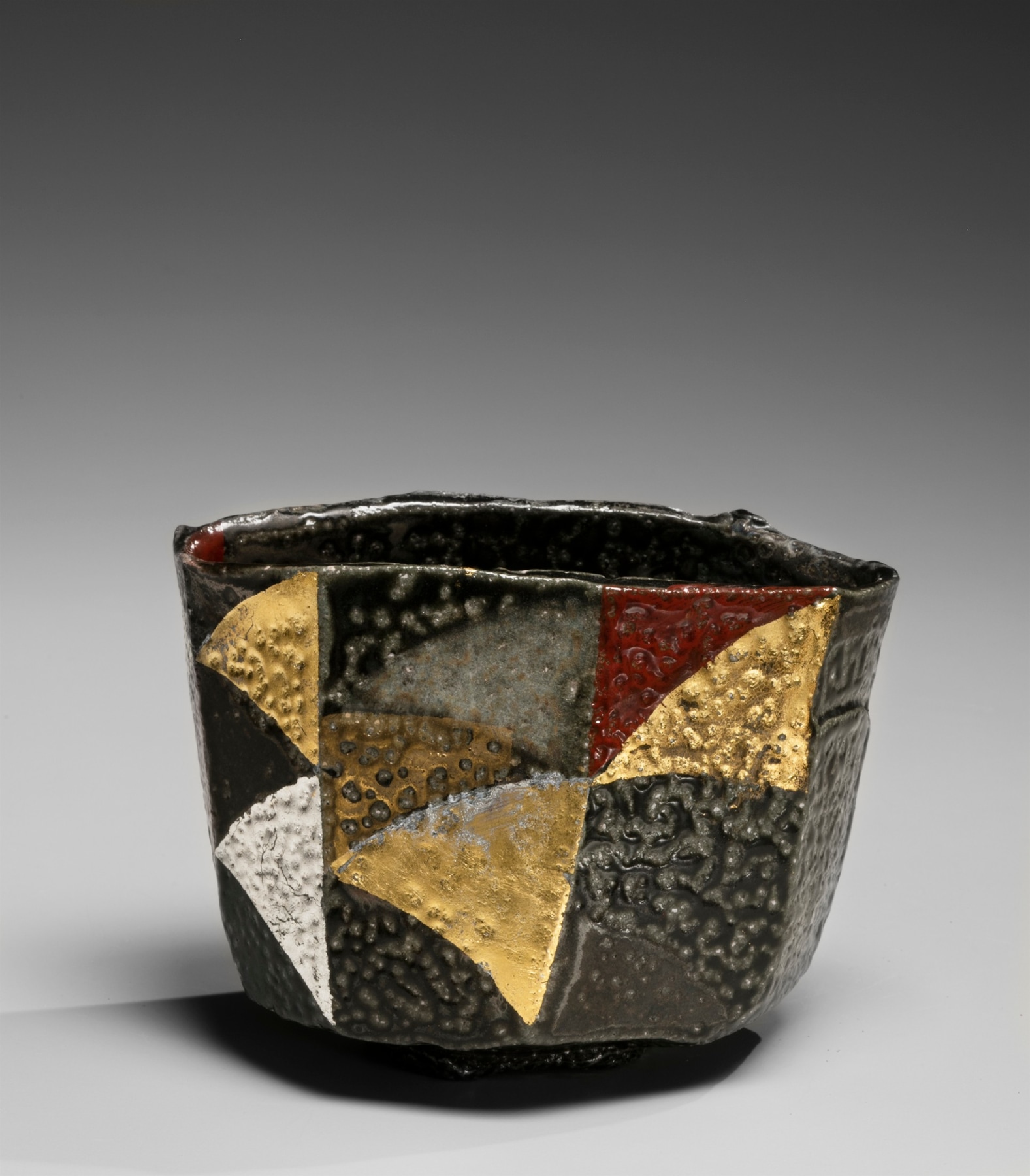
About Joan B. Mirviss LTD
With more than forty-five years of experience, Joan B. Mirviss is a pillar in the field of Japanese art. As a dealer, scholar, curator, and advisor, she has been the driving force championing the top Japanese clay artists, who she represents exclusively, and whose works she has placed in major museums around the globe. Widely published as a highly respected expert, Mirviss has built many institutional and private collections of Japanese art. JOAN B MIRVISS LTD exhibits modern and contemporary Japanese ceramics, ukiyo-e, and Japanese paintings from its exclusive Madison Avenue location in New York City.